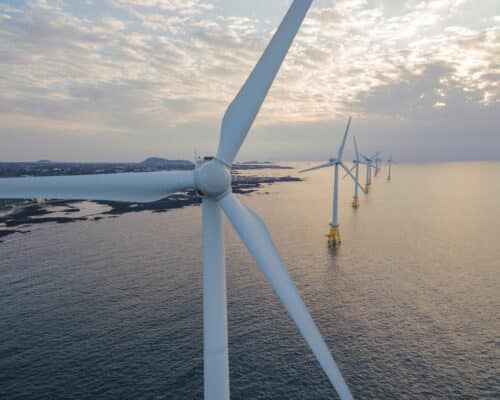The State of Fossil Fuel Funding in 2024: The Biggest Corporate and State Backers
23 October 2024 – by Viktor Tachev
“We cannot save a burning planet with a fire hose of fossil fuels,” said the UN Secretary-General António Guterres at COP28. Current financing trends show that we are not moving in the right direction when it comes to fossil fuels. G20 countries and banks are actively funding fossil fuels.
Today, the world spends over USD 13 million per minute on fossil fuel subsidies to keep the costs of using dirty fuels reasonable for the average consumer. The amount spent on renewables, which are already cheaper even without subsidies, is nearly four times lower.
This comes at a time when scientists say that 60% of existing fossil fuel reserves within active fields and mines should remain unextracted to keep 1.5°C in reach. In that sense, the world already has far more oil, gas, and coal than it can afford to burn. Yet, governments, banks and institutional investors continue to pour billions into new fossil fuel projects.
The State of Bank Funding for Fossil Fuels in 2024
In 2021, the IEA said that achieving net zero by 2050 and limiting warming to 1.5°C, as per the Paris Agreement, required the world to halt approvals for new oil and gas fields and new coal mines or mine extensions.
Yet, according to the 2024 edition of the Banking on Climate Chaos report by Reclaim Finance and partners, the top 60 largest private banks have provided around USD 6.9 trillion to fossil fuels since the Paris Agreement. Of this, USD 3.3 trillion has gone towards fossil fuel expansion. In total, the top 60 leading banks have backed over 4,200 fossil fuel companies through underwriting and lending services.
In 2023, banks granted USD 705 billion in fossil fuel financing, with USD 347 billion for fossil fuel expansion alone. This comes two years after many of the banks included in the analysis vowed to work towards lowering emissions as part of the Net-Zero Banking Alliance.
According to the report, JP Morgan Chase was the leading financier of fossil fuel companies, with USD 40.8 billion provided in 2023. The bank is also number one in financing fossil fuel expansion.
The Japanese Mizuho ranked second for both fossil fuel financing (USD 37 billion) and financing for fossil fuel expansion (USD 18.8 billion).
According to the analysis, Bank of America, which ranked third in fossil fuel financing in 2023, even rolled back its already weak climate policies, including dropping funding exclusions on thermal coal, coal-fired power plants and Arctic drilling. The bank also abandoned the Equator Principles, a risk management framework financial institutions use to assess and manage environmental and social risk in project finance.
In 2023, Bank of America was involved in financing for 24 companies extracting oil and gas in the Amazon biome with USD 162 million provided. JP Morgan Chase contributed USD 129 million.
Meanwhile, Citibank, which was among the founding members of the UN-convened Net-Zero Banking Alliance, is the second-biggest fossil fuel financier since the Paris Agreement and the biggest financier for the oil, gas and coal companies expanding fossil fuels in 2023.
Significant amounts of financing are also routed to fossil fuels through tax havens. According to the Tax Justice Network, banks fund fossil fuel companies with trillions of dollars through opaque financial centres in several countries.
In addition, multilateral development banks (MDBs) also continue to finance fossil fuels. According to the Public Enemies: Assessing MDB and G20 International Finance Institutions’ Energy Finance study by Oil Change International and Friends of the Earth US, MDBs provided USD 3.2 billion a year to fossil fuel projects on average between 2020 and 2022. With around USD 1.2 billion in annual fossil fuel funding, the World Bank emerged as the leading provider. Around two-thirds of the funding has gone into gas projects.
Asian Banks Among the Biggest Funding Providers for Fossil Fuels
The Banking on Climate Chaos report finds that Japanese and Chinese banks are among the main drivers of investments in coal and gas in 2023. The Japanese Mizuho ranks second after JP Morgan for overall fossil fuel financing over the past year. Mitsubishi UFJ Financial Group (MUFG) ranked third worst among financiers of fossil expansion companies.
Regarding LNG, the top financiers globally were Mizuho and MUFG. Alongside the Chinese Industrial and Commercial Bank of China, they also formed the top 3 of the biggest funding providers for gas-fired power.
Three Japanese banks – MUFG, Mizuho and SMBC Group – also topped the list of the biggest financiers of the 65 companies involved in ultra-deepwater oil and gas activities.
Regarding coal mining, 81% of the funding provided in 2023 came from Chinese banks, including China CITIC Bank, China Merchant Bank, Shanghai Pudong Development Bank, Industrial and Commercial Bank of China and China Everbright Group. CITIC and China Everbright Group were also the most active financiers for metallurgical coal.
Chinese financiers were also responsible for 65% of the funding provided to coal power companies that are part of the Global Coal Exit List.
Investors Are Also Actively Funding Fossil Fuel Companies
According to the Investing in Climate Chaos platform, launched this year by Urgewald and 17 NGO partners, institutional investors hold USD 4.3 trillion in bonds and shares of fossil fuel companies in 2024. The institutional investors in question include pension funds, insurance companies, asset managers, hedge funds, asset management arms of commercial banks, sovereign wealth funds and more.
The data reveals that almost USD 4 trillion of the identified investments are in companies actively developing new fossil fuel assets.
The four biggest institutional investors collectively hold and manage USD 1.1 trillion in fossil fuels and are from the US. Vanguard ranks on top, followed by BlackRock, State Street and Capital Group. According to Urgewald, Vanguard firmly refuses to adopt any fossil fuel restriction policy and consistently votes against climate resolutions in the companies it owns.
Of the USD 4.3 trillion in investments, USD 1.2 trillion is in bonds and shares of companies on the Global Coal Exit List, while USD 3.8 trillion is allocated to companies on the Global Oil & Gas Exit List. Another USD 0.7 trillion is in companies on both lists.
According to Urgewald, a total of 5,260 institutional investors continue to hold bonds and shares of coal companies, with 7,245 holding investments in oil and gas expansion. This comes despite the COP28 agreement to “transition away” from fossil fuels.
The Investing in Climate Chaos platform reveals that while the US and Canada lead the way in fossil fuel investment, Japanese institutional investors rank third, holding USD 168 billion in bonds and shares of coal, oil and gas companies from 49 countries. However, it is worth noting that 52% of that (USD 87 billion) is invested in Japanese fossil fuel companies. The biggest Japanese institutional fossil fuel investor is the Government Pension Investment Fund, the world’s largest public pension fund. Others include Mitsubishi UFJ Financial, Nomura, Sumitomo Mitsui Trust and Nippon Life Insurance.
According to the team behind the platform, this is a systemic issue for Japanese institutional investors. Today, just one Japanese insurer, SOMPO, has adopted a coal exclusion policy.
The Biggest State Backers of Fossil Fuel Expansion
According to an Oil Change International study, the G20 has provided at least USD 142 billion (around USD 47 billion a year) to finance the expansion of fossil fuels in developing countries between 2020 and 2022, with 54% of the funds flowing into gas projects. The analysis identifies Canada (USD 10.9 billion), South Korea (USD 10 billion) and Japan (USD 6.9 billion) as the biggest sources of finance. This comes despite the G7’s commitments to stop financing fossil fuels overseas by the end of 2022.
In fact, the study’s authors note that Japan continued to make new fossil fuel investments overseas until the time of analysis (mid-March 2024) by exploiting loopholes in its promise to end fossil fuel funding.
According to a Solutions for Our Climate study, Japan provided USD 93 billion in support to global oil and gas projects over the last decade. Despite its pledge to end overseas fossil fuel financing by the end of 2022, Japan’s funding even increased in 2023.
After analysing Japan’s strategy to build a global natural gas empire, Bloomberg reveals that its efforts have generated the country USD 14 billion in profits in 2023. The analysis shows that an LNG shipment controlled by a Japanese company leaves a port somewhere in the world every six hours. A single LNG shipment generates 250,000 tonnes of CO2, and Japanese companies are involved in every step of the process.
However, Japan’s gas empire isn’t the only example of developed nations scaling up their gas investments. In fact, an analysis by The Guardian has revealed that there has been a surge in new oil and gas exploration in 2024. This threatens to unleash close to 12 billion tonnes of emissions – nearly equal to China’s annual carbon footprint. The emissions levels would be greater than the combined emissions of new licenses issued in the past four years. The massive expansion will be led by countries usually identified as climate leaders, such as the UK, the US, Canada, Norway and Australia. The analysis shows that the five countries have been responsible for 67% of all new oil and gas licenses since 2020.
The data behind the study covered new licenses issued by June 2024. According to the authors, China will approve most of the oil and gas blocks for the rest of the year.
“People who think we can keep warming to 1.5°C and continue to open new gas and oil fields might as well claim the Earth is flat and believe in Bigfoot,” said Dr. Friederike Otto, senior lecturer in climate science at the Grantham Institute, Imperial College London.
G20 Nations Provide More Financing to Fossil Fuels Than to Clean Energy
According to the study by Oil Change International and Friends of the Earth US, between 2020 and 2022, G20 economies invested an average of USD 35 billion into clean energy developments overseas per year, compared to USD 47 billion for fossil fuels. Meanwhile, just 3% of all clean energy finance went to low-income countries. Solutions for Our Climate notes that Japanese public finance for oil and gas was four times higher than that provided for clean energy projects over the past decade.
The G20 countries are also heavily subsidising fossil fuels. Data for 2022 reveals that the group has provided USD 1.4 trillion in subsidies. The figures don’t account for fossil fuel externalities due to climate disasters and environmental and health impacts. If these are included, the IMF estimates the total cost of fossil fuel subsidies to be USD 7 trillion in 2022. For reference, the world’s clean energy investments for 2022 and 2023 were USD 1.1 trillion and USD 1.8 trillion, respectively. This discrepancy comes at a time when the world is proven to not be on course to reach the goal of tripling clean energy capacity by 2030.
The IEA’s World Energy Investment 2024 report notes that while power sector investment is shifting toward clean energy, fuel supply investments remain overwhelmingly focused on fossil fuels, with upstream oil and gas spending set to increase by 7% this year.
Banks and States Funding Fossil Fuel Industry Are Throwing Fuel Onto the Fire
“Every day, finance ministers, CEOs, investors, and development bankers direct trillions of dollars. It’s time to shift those dollars from the energy and infrastructure of the past towards that of a cleaner, more resilient future. And to ensure that the poorest and most vulnerable countries benefit,” said UN climate chief Simon Stiell in a speech from April 2024.
“We have two years to save the world,” he added.
When 80% of the world’s top climate scientists envision a global warming trajectory of at least 2.5°C, and just 6% see a 1.5°C scenario as realistic, halting fossil fuel funding is more important than ever. This year has been dubbed the “year of climate finance”, and governments and the financial industry need to prove this isn’t for the wrong reasons. COP29 is the prime opportunity for this.
by Viktor Tachev
Viktor has years of experience in financial markets and energy finance, working as a marketing consultant and content creator for leading institutions, NGOs, and tech startups. He is a regular contributor to knowledge hubs and magazines, tackling the latest trends in sustainability and green energy.
Read more








